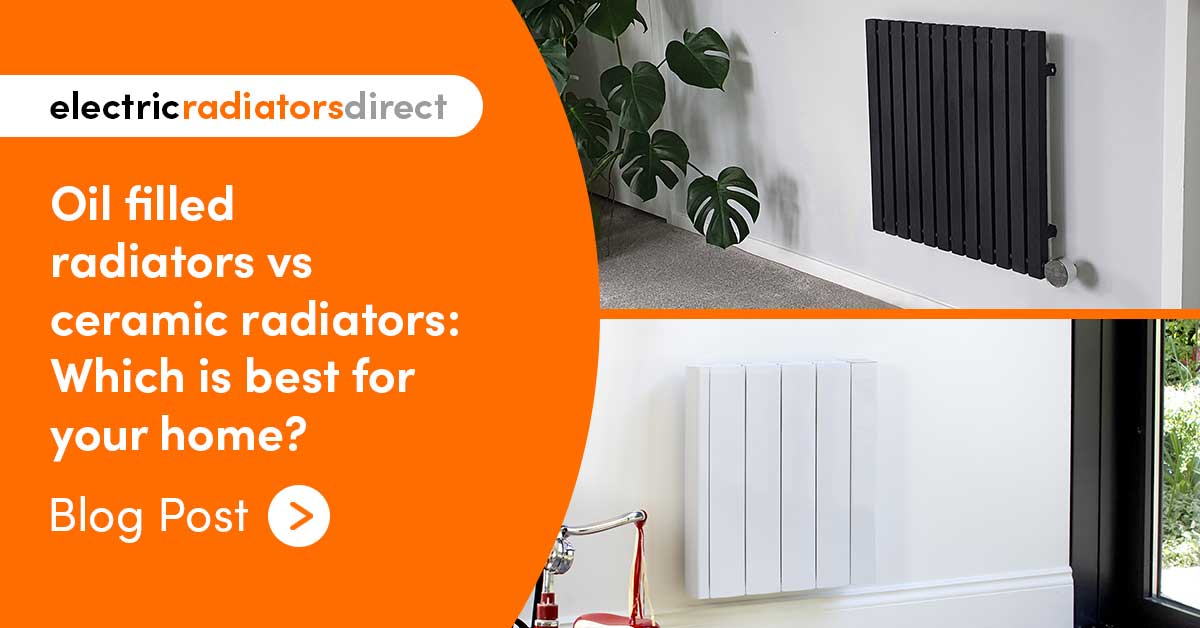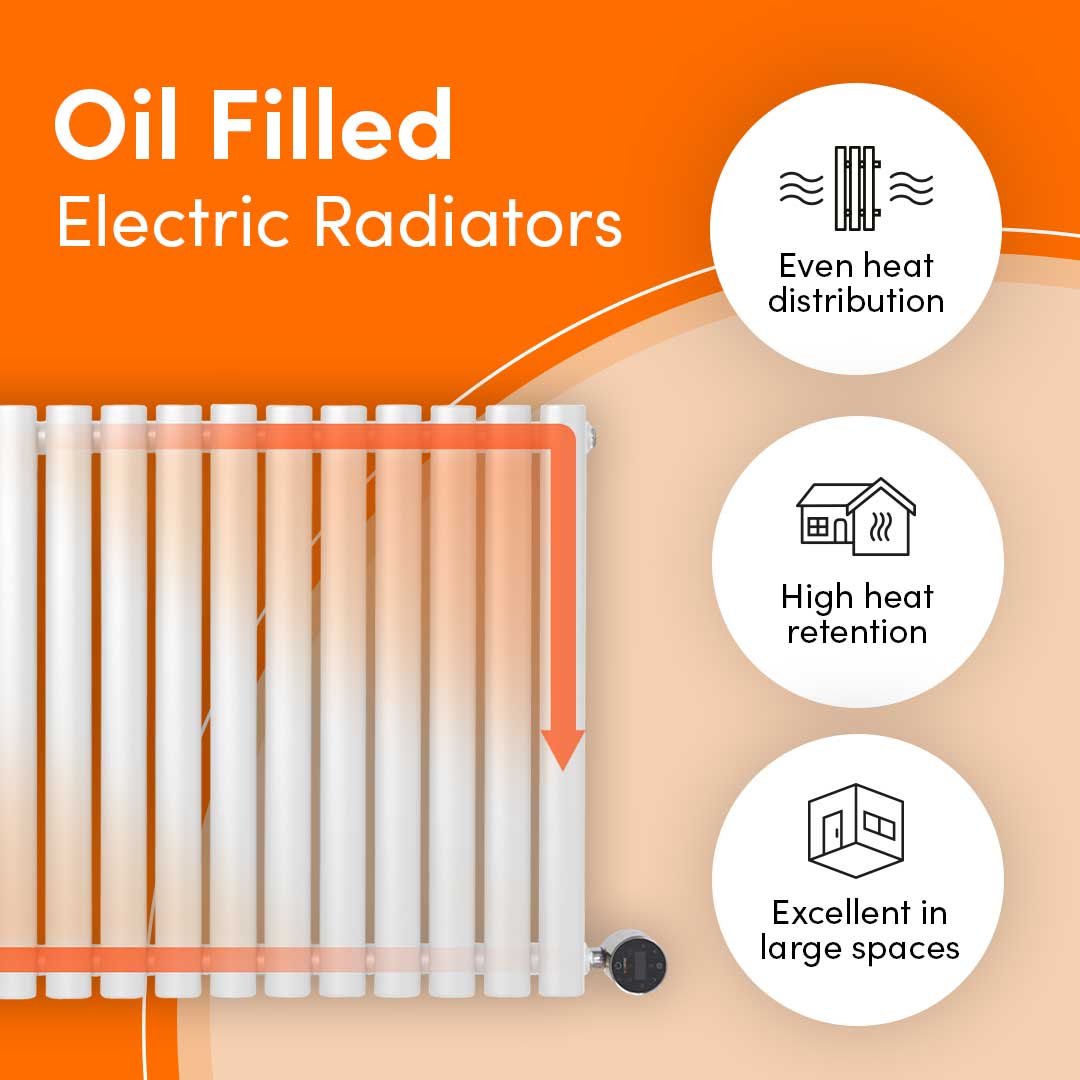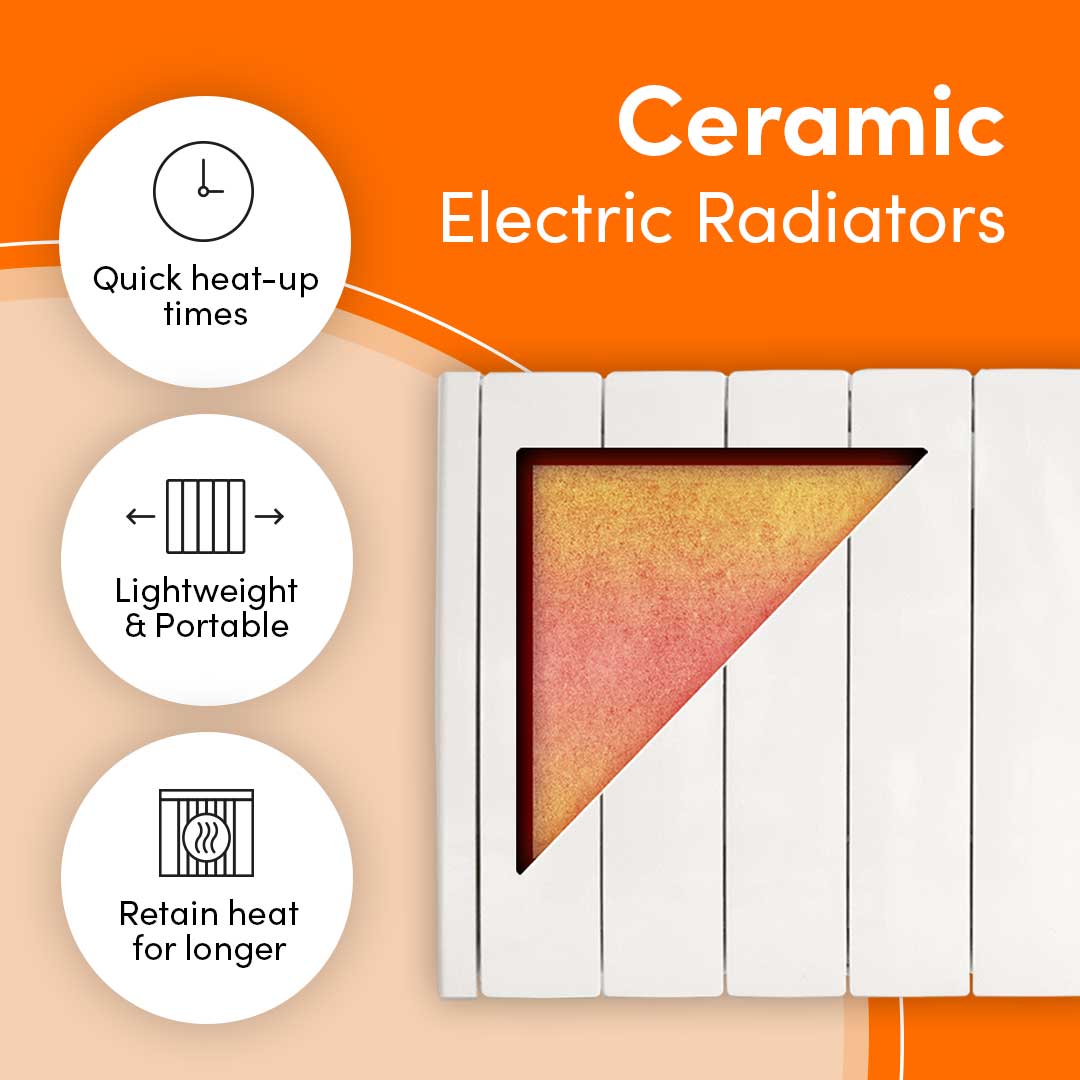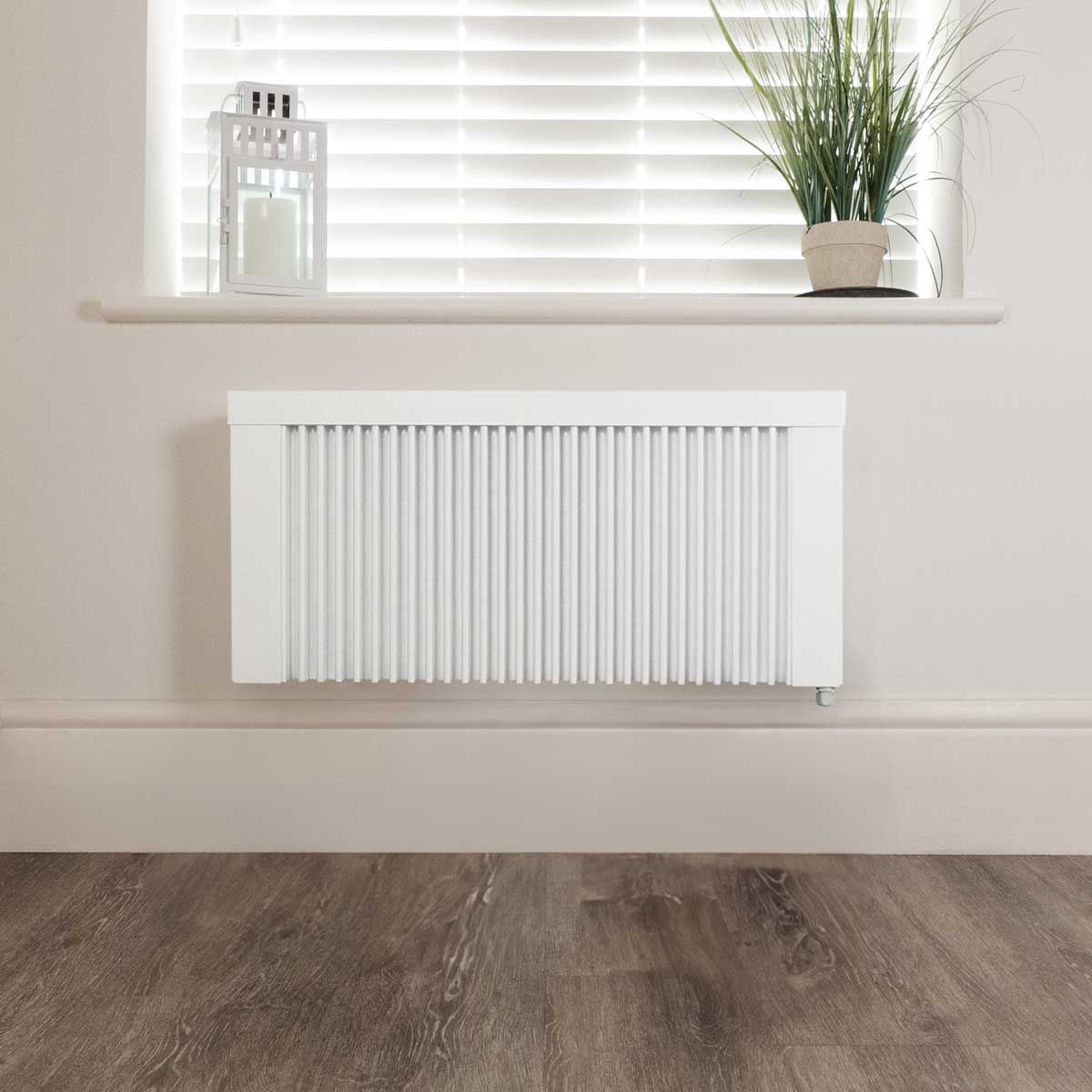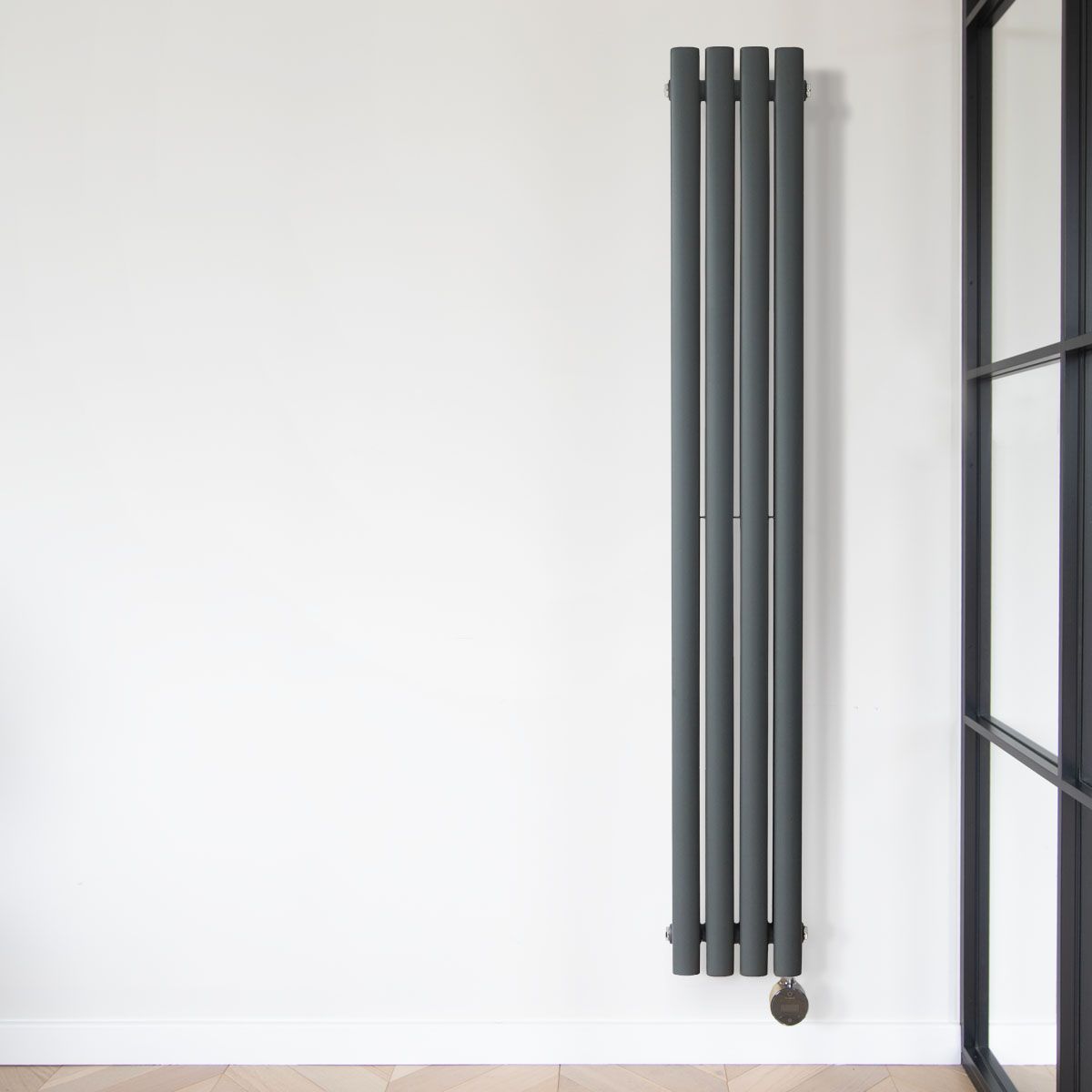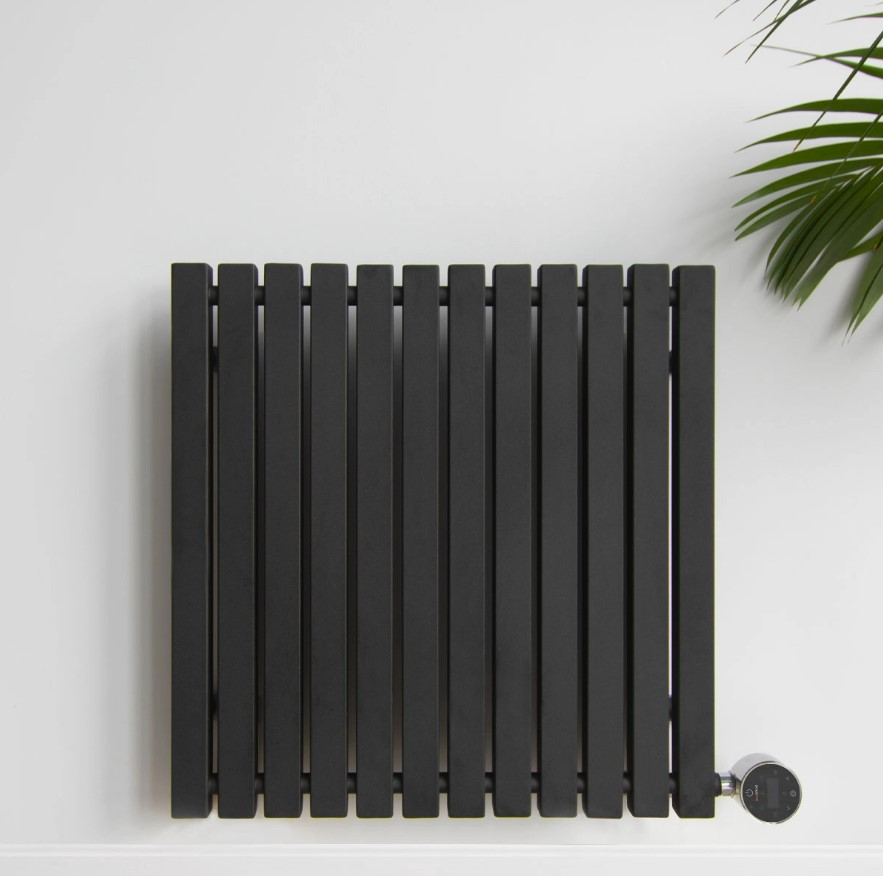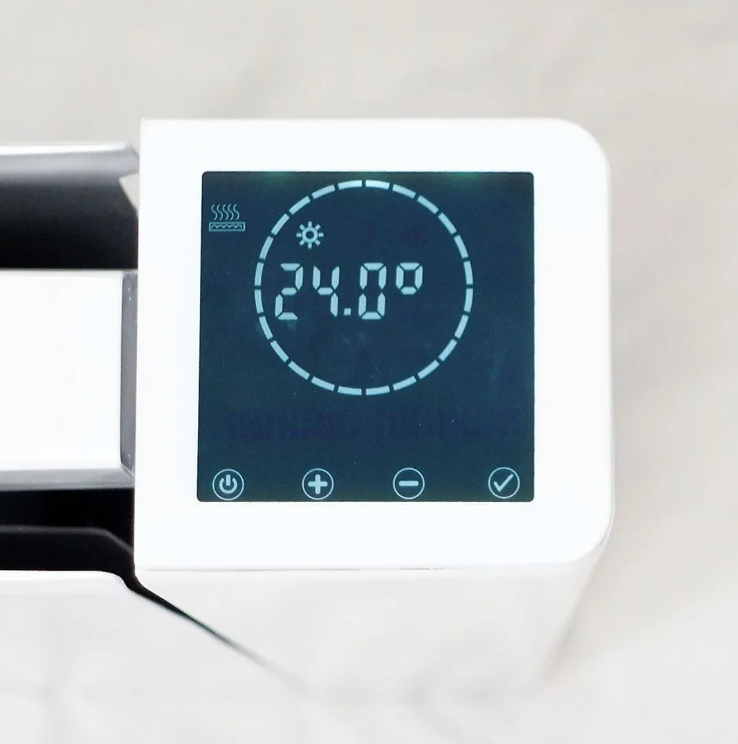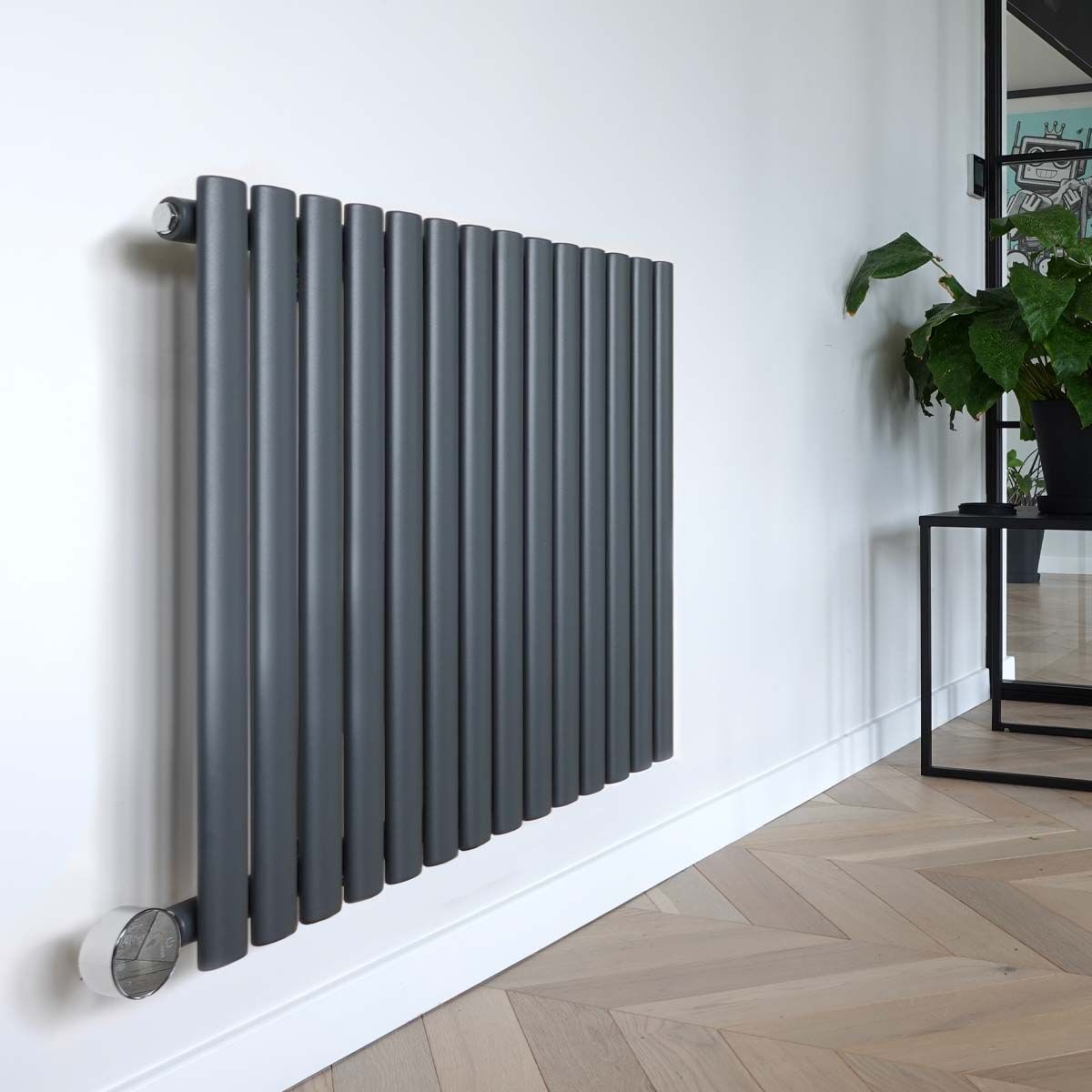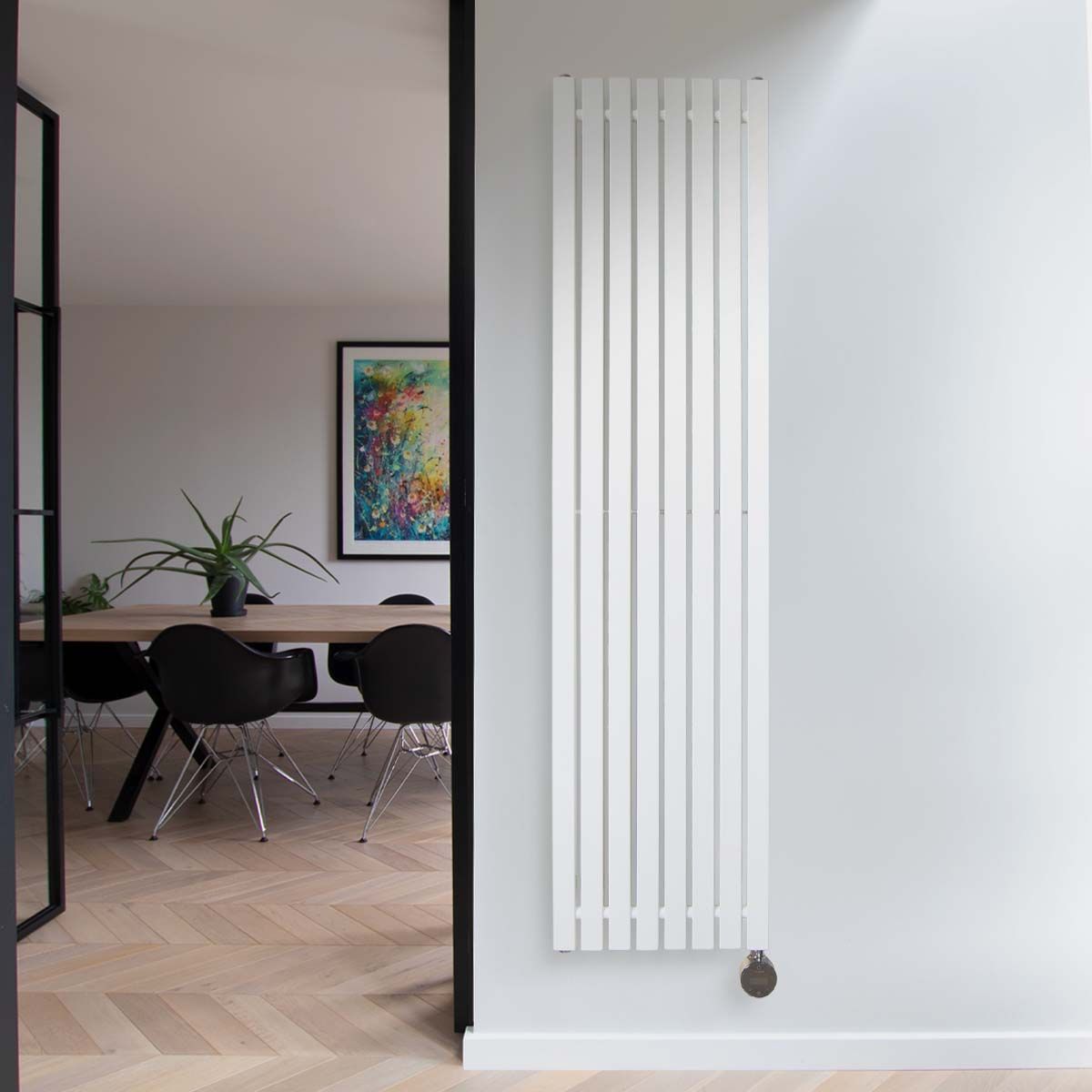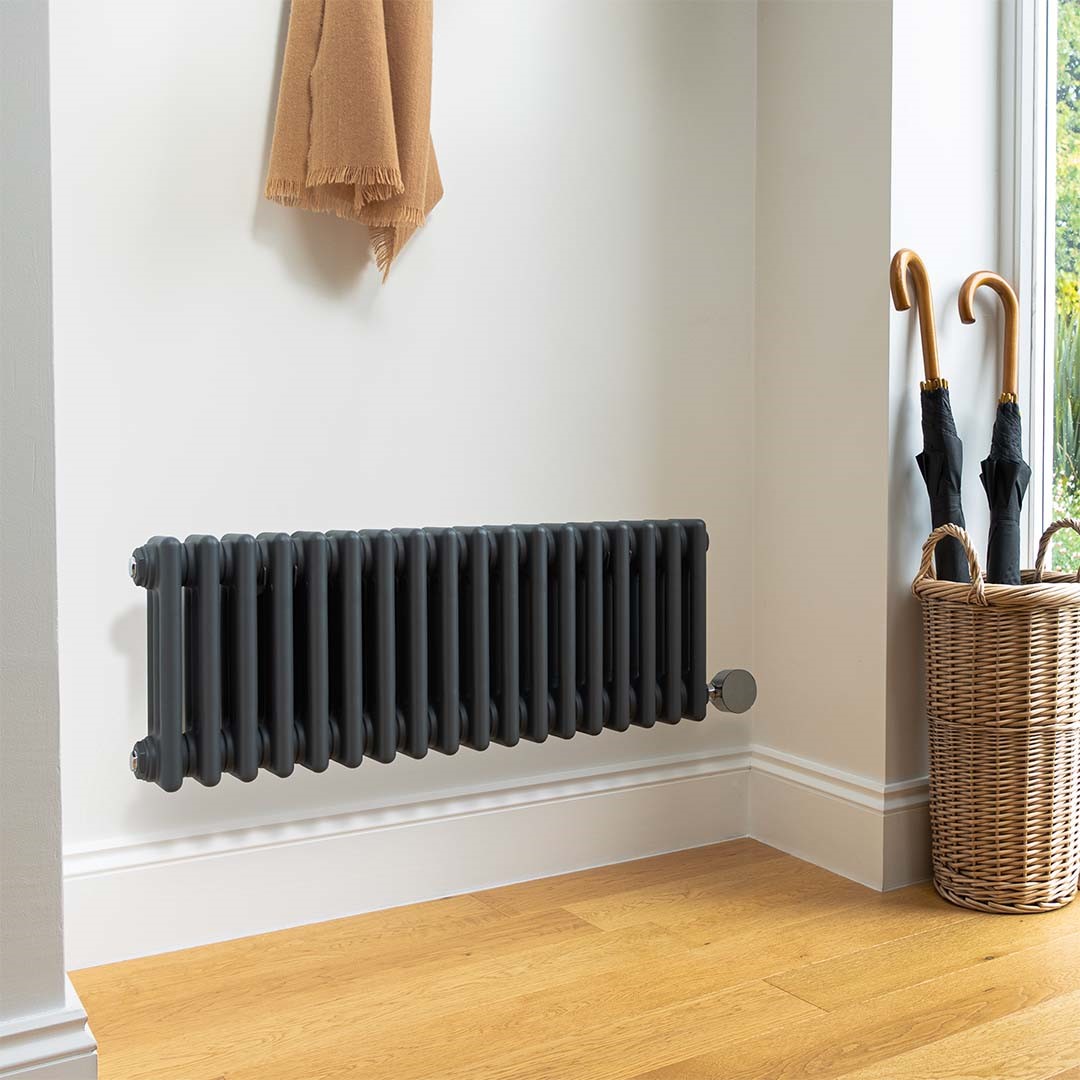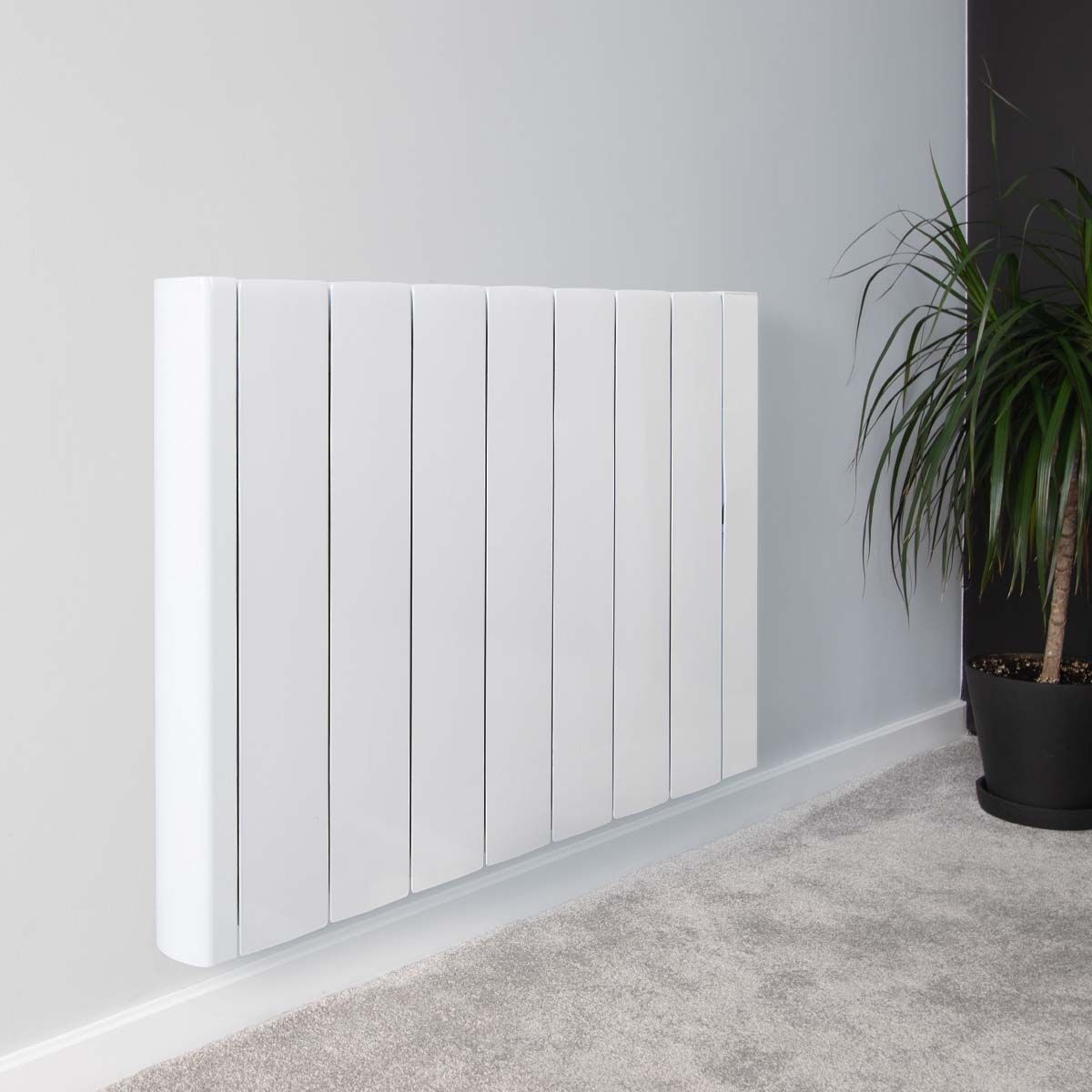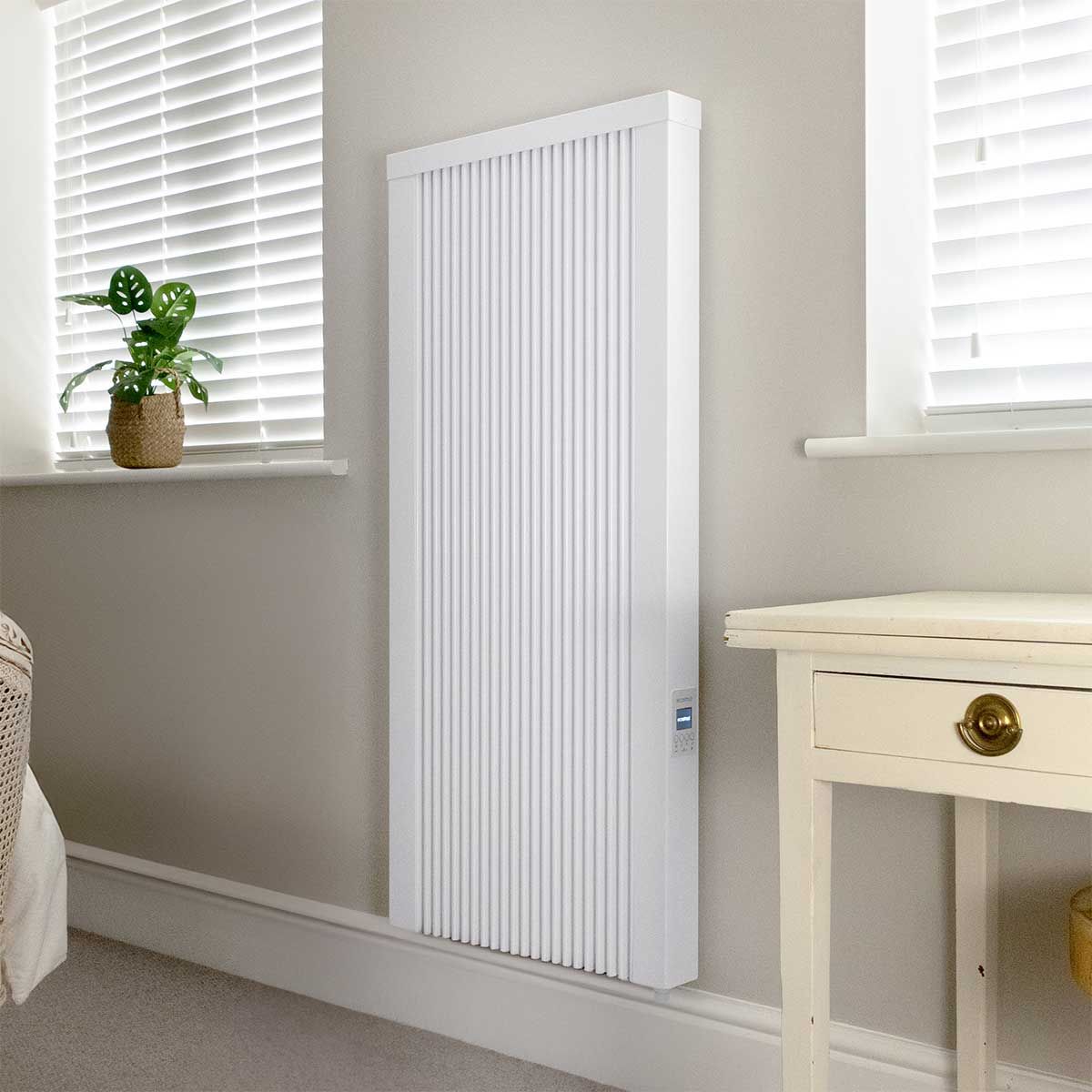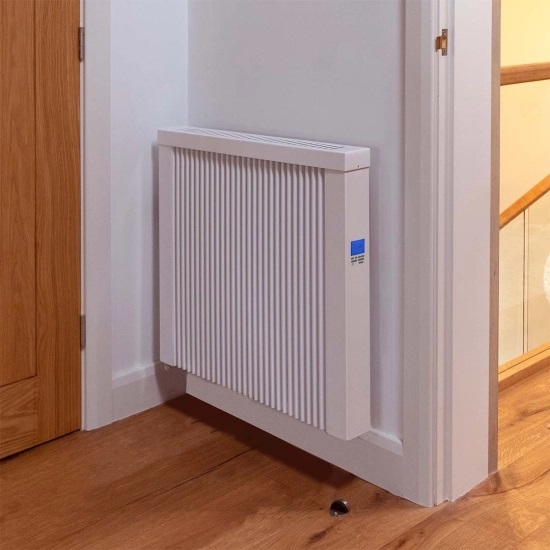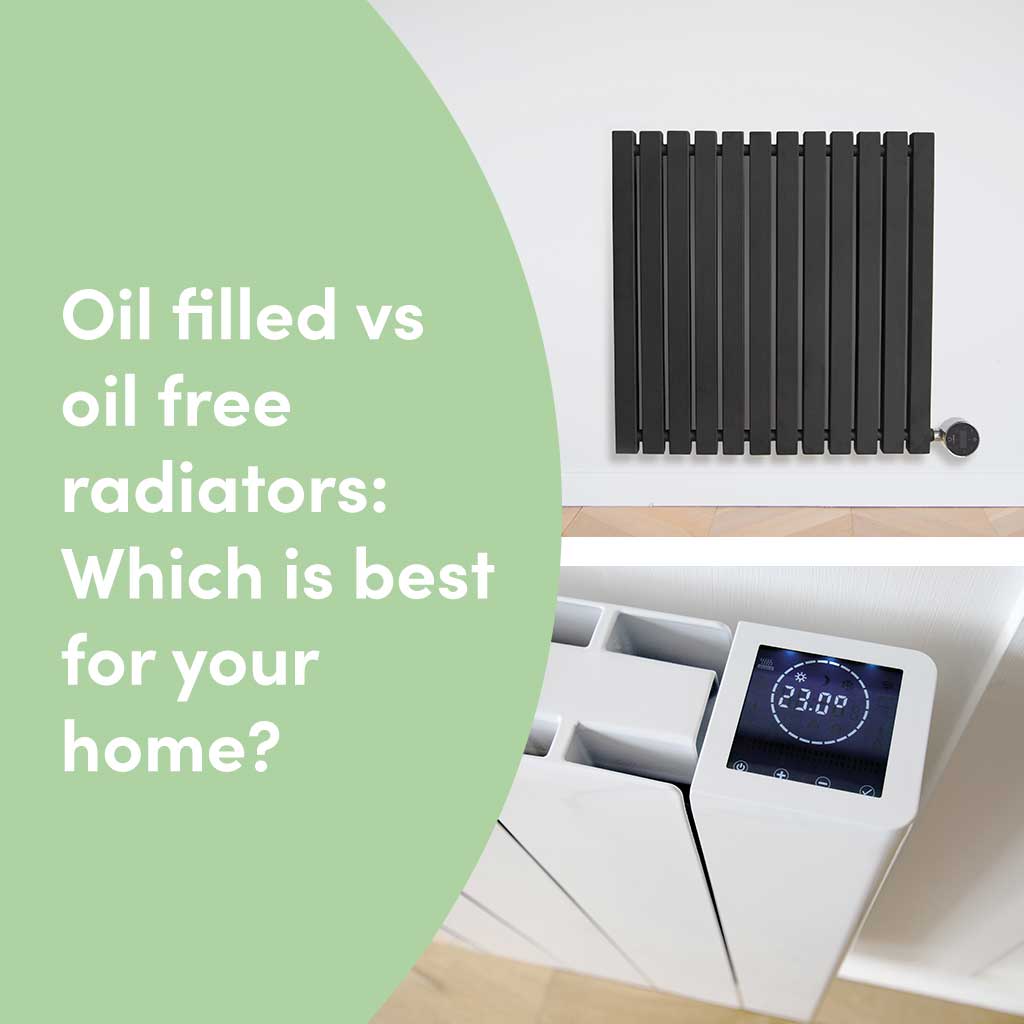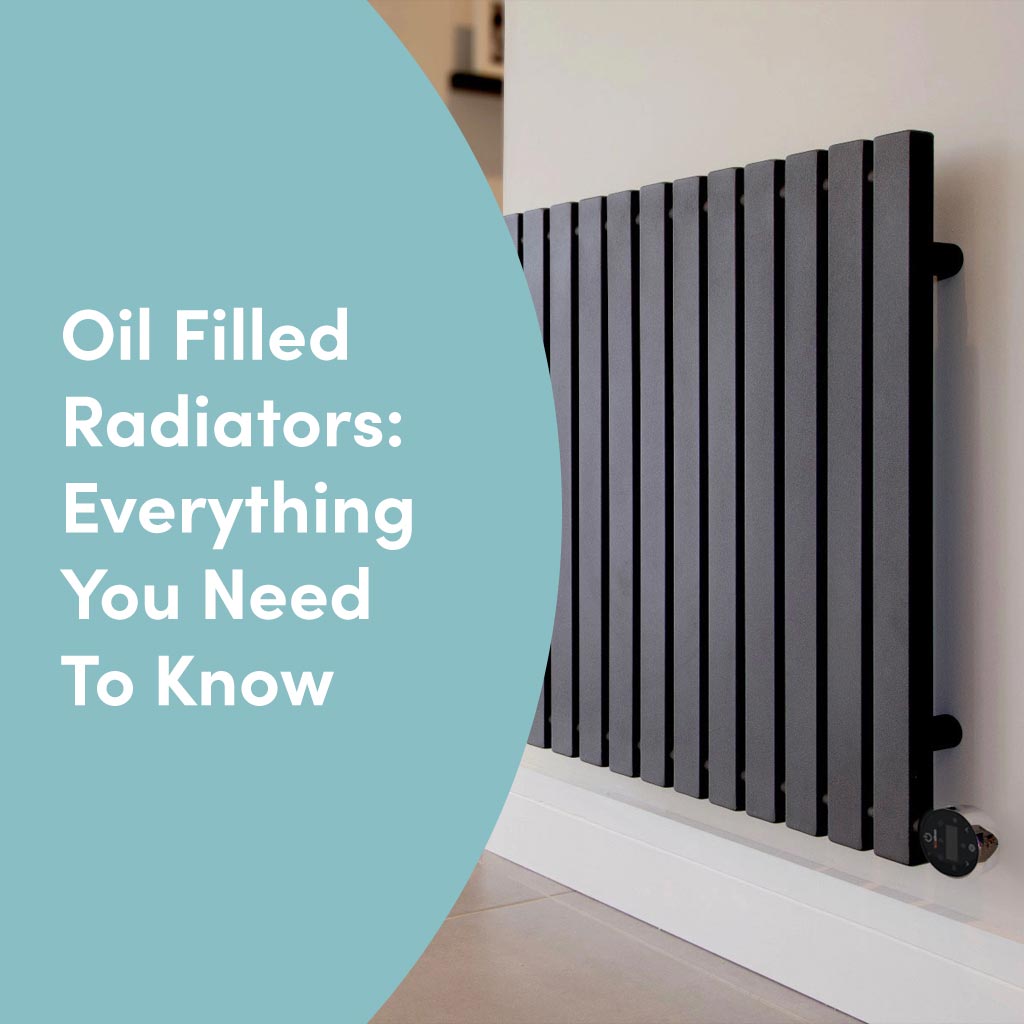Last updated: March 2024
Looking for the best electric radiator for your home? While both oil filled and ceramic radiators boast efficiency, precise control, and versatile aesthetics, there are some key differences that may make one better suited to your space than the other. So, let’s delve into how they work, what sets them apart, and help you determine which electric radiator is right for you.
Check out our video!
Covering everything from heating technology and performance to installation and style, we’ll help you determine which electric radiator is right for you.
Oil filled radiators explained
Oil-filled electric radiators are the go-to choice for many homes. A direct offshoot of central heating systems, they blend superior efficiency with showstopping designs.
How do they work?
Oil-filled electric radiators heat using an electrical element immersed in thermodynamic oil, which is contained entirely within the radiator body. Pre-filled on delivery and engineered to spread evenly throughout the radiator, warmth is dispersed throughout the room via a combination of convection and radiation.
Key benefits of oil filled radiators
Suited to all-day heating


With improved heat dispersion, the thermal fluid reaches every part of the radiator, so the surface has a more even temperature. Not only does it equal a steady supply of warmth that lasts longer, it ensures there’s no risk of cold spots or overheating.
Great for a range of spaces
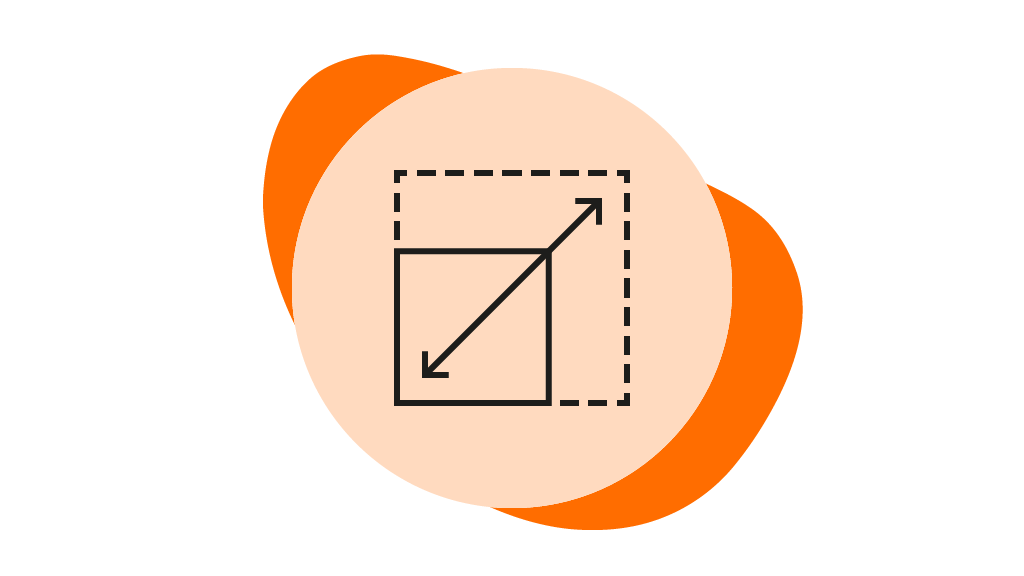

Suitable for both bathrooms and main living spaces, oil filled radiators are nothing if not adaptable. They’re particularly suited to larger spaces, since their uniform heating is designed to reach every nook and cranny of the room.
Versatile designs


Designed to encourage the heating process, oil filled radiators benefit from a diverse range of styles. While some on the market have been converted from central heating and fitted with a new element, our range has been built from the ground up to utilise the full potential of electric, ensuring optimal design and performance.
Ceramic radiators explained
Ceramic radiators offer efficient and convenient heating for a wealth of spaces. Many homeowners prefer them due to their compact & minimalist builds, heat-retentive technology, and an emphasis on delivering portable, fast-acting warmth.
How do they work?
Ceramic radiators use wire elements embedded into high-density blocks. These ceramic bricks excel at retaining heat, allowing the radiator to remain switched off for longer while still maintaining your desired temperature. Offering 20% more radiant heat compared to oil filled radiators, they’re particularly well-suited in spaces struggling to maintain consistent temperatures.
Key benefits of ceramic radiators
Responsive & robust warmth


Ceramic electric radiators heat up in just 10 minutes, making them an excellent choice for rooms requiring quick, ad-hoc heating.
50:50 heat transfer
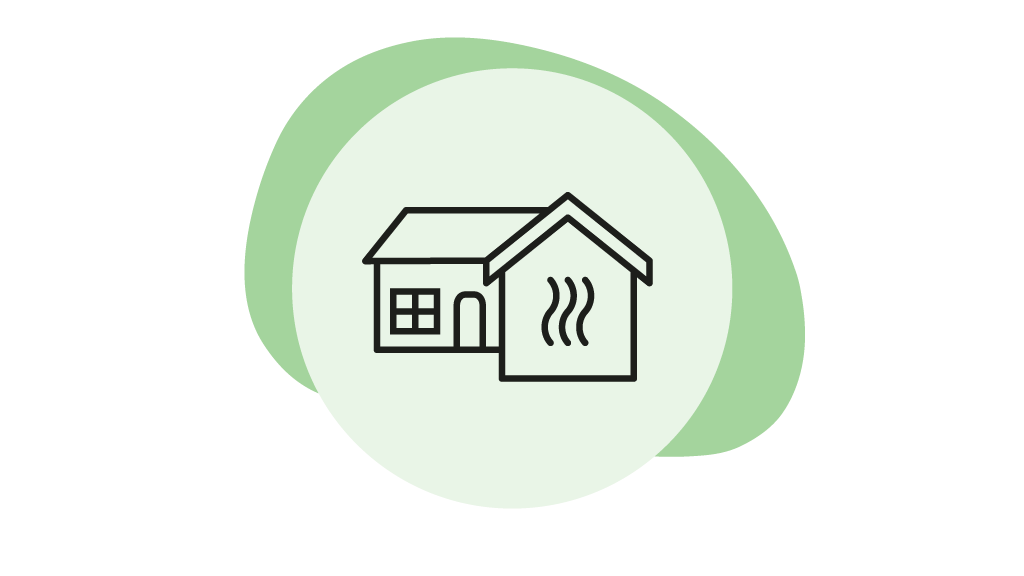

Ceramic radiators emit an even split of fast-acting convected heat and long-lasting radiant heat. Infrared radiation directly warms people rather than the air, making them ideal for rooms that struggle with draughts or cold spots.
Flexible installation


Ceramic radiators can be DIY mounted to the wall in minutes. Many models also offer optional radiator feet, allowing you to easily move them to wherever warmth is needed.
Now you know the basics, it’s time to compare the two to help you pinpoint which is best for your home!
Costs & heating performance
Our selection of oil filled radiators have been meticulously crafted, designed from the ground up to enhance the convection process and built using the highest-quality materials. This commitment to excellence often translates to a higher price point compared to other types. While ceramic radiators maintain excellent quality, their manufacturing process is typically more streamlined, resulting in a lower initial cost. In terms of heat performance and running costs, both are equally efficient, boasting exceptional heat retention and providing a prolonged, even spread of warmth. The key distinction lies in their suitability for different applications.
| Oil filled radiators | Ceramic radiators | |
|
Costs |
Generally, a higher initial cost. Energy efficiency translates to stable running costs |
Energy efficient which results in stable running costs |
|
Heating performance |
Provides a steady, even heat over an extended period. Slower heat-up time – up to half an hour, but also means slower cooldowns |
Rapidly warms the space – heats in just 10 minutes. Slow cooldowns equal the best of both worlds |
|
Usage patterns |
Better suited for pre-scheduled heating |
Suitable for both ad-hoc and pre-scheduled heating |
|
Room suitability |
Suitable for most room types, particularly larger spaces |
Best suited for small to mid-sized rooms; not suitable for bathrooms |
|
Heat distribution |
70:30 split of convection and radiation. Design helps to ensure successful circulation of fluid and encourage convection cycle |
50:50 split of convection and radiation – heats both the air and you directly for warmth on a deeper level |
Which is best for your home?
If you’re looking for steady, all-day heating for a main living space, oil filled radiators might just fit the bill. However, if on-demand heating is a priority, ceramic radiators stand out thanks to their rapid heat-up times. Both are 100% efficient at point of use and feature precision thermostats that better regulate room temperature. However, oil filled radiators may be less cost-effective if used for sporadic heating. As they need time for the oil to spread throughout the entire unit, this could potentially lead to higher energy consumption if you crank up the thermostat expecting instant warmth.
Aesthetics & design
Ceramic radiators are known for their compact and uniform designs; perfect if you prefer a minimalist aesthetic. On the flip side, oil filled radiators provide more design flexibility. With the choice of horizontal, vertical, modern or traditional finishes, you’re guaranteed to find something that matches your home’s design scheme. Oil filled radiators are often considered the luxury choice – these radiators take advantage of their striking looks to add a touch of designer chic to your space.
| Oil filled radiators | Ceramic radiators | |
|
Appearance |
Diverse styles and orientations, suitable for any design scheme |
Sleek, uniform designs for a more understated finish |
|
Size & weight |
Bigger and heavier |
Generally lighter and more compact |
|
Portability |
Only suitable for wall mounting |
Can be made freestanding with optional feet, allowing for flexible placement |
|
Heating element |
Positioned at the base of the unit with the interface visible |
Concealed within the radiator |
Which is best for your home?
If you're in search of a space-saving, compact, and minimalist heater, ceramic radiators could be the perfect fit for your space. If design is a top priority, oil filled radiators are meticulously crafted to not only perform well but also enhance the visual appeal. With a variety of shapes, sizes, and finishes, these radiators cater to every preference. So, if you're looking for a heater that's both a showstopper and highly functional, go for oil filled.
Installation & maintenance
Installation is swift and straightforward, as is the case for all electric radiators. With no risk of carbon monoxide, you don’t have to worry about annual servicing either! Whatever your preference, you're guaranteed a cost-effective and low-maintenance heating system.
| Oil filled radiators | Ceramic radiators | |
|
Installation |
Requires professional hardwired installation |
Can be installed DIY-style |
|
Mounting options |
Wall-mounted only, limiting placement options |
Offers flexibility: can be wall-mounted or made freestanding with optional feet |
|
Maintenance |
Low: a bleed is recommended after first use, then the occasional dusting |
Low: occasional dusting |
|
Common issues |
Minor chance of leaks or problems with the thermostat |
Minor chance of thermostat malfunctions or ceramic element damage |
Which is best for your home?
If you’re looking for a permanent wall-mounted heater, a hardwired oil filled radiator offers a completely integrated appliance with a tidier finish to boot. If you’d prefer the freedom of moving your heater from spot-to-spot, ceramic radiators can be DIY-installed on the wall or made freestanding. Either way, they’re both low maintenance with similar warranties.
Programming
Efficient programming capabilities are a key aspect of modern electric radiators. Both oil filled and ceramic radiators come equipped with advanced energy-saving features to enhance your heating experience and make things as convenient as possible.
| Oil filled radiators | Ceramic radiators | |
|
Precise digital thermostats |
Equipped with thermostats that allow for precise temperature control |
Equipped with thermostats that allow for precise temperature control |
|
Energy-saving features |
24/7 programming, open window detection & low-energy heating modes come as standard |
Same, with some available with motion sensor technology for a hands-off approach to programming |
|
WiFi app control |
Heating elements come with WiFi compatibility |
Integrated WiFi and voice control capabilities |
|
User interface |
Manual control and basic interfaces via the heating element |
Recessed digital displays with push-button/touchscreen control |
Which is best for your home?
Both offer a wealth of energy-saving features and smart programming to give you greater convenience over your heating, especially when you’re away from home. If you prefer manual control, ceramic radiators tend to have their digital displays built into the top or side of the unit, which will make this type of programming easier. If you’re looking for a more hands-off approach, some ceramic radiators also come with geolocation and motion sensor technology, upping the game when it comes to smart heat management.
Our recommended electric radiators
UK manufacturer Ecostrad has developed market-leading electric radiators that look the part in every home. Whether you value aesthetics, efficiency, or ease of programming, these radiators combine the latest innovations in electric heating to cater to every taste and budget.
Oil filled:
Ceramic:
Still unsure?
Check out our buying guide.
Mix and match your electric heating needs
So, which is best for your home? It's not a matter of one being better than the other; rather, ceramic and oil filled radiators are tailored to different applications and heating needs. As a result, you might find yourself reaching out for both! The flexibility of electric radiators enables you to mix and match appliances, with many being WiFi-compatible, allowing for convenient control directly from your smartphone! So, explore our diverse range of ceramic and oil filled radiators to discover the perfect fit for your home. For further reference, check out our radiator calculator, and if you’d prefer personalised advice, get in touch with our expert heating consultants for a no-obligation free quote.
Key learnings
✓ Oil filled radiators – Efficient and adaptable, they provide steady, all-day heating for larger spaces, making them ideal for main living areas.
✓ Ceramic radiators – Known for rapid heat-up times and flexibility in installation, they offer efficient and convenient heating, particularly suitable for smaller to mid-sized rooms or draught-prone spaces.
✓ Costs and heating performance – While oil filled radiators may have a higher initial cost, both types are equally efficient in terms of heat performance and running costs, with the key difference lying in if you prefer scheduled or ad-hoc heating.
✓ Aesthetics and design – Oil filled radiators offer diverse styles and orientations, while ceramic radiators boast a more sleek, uniform design.
✓ Installation and maintenance – Oil filled radiators require professional hardwired installation, while ceramic radiators can be DIY-mounted to the wall or made freestanding. Both are low maintenance with comparable warranties.
✓ Programming – Both come equipped with advanced features for precise temperature regulation, smart control and energy efficiency. Ceramic radiators often have recessed digital displays that may make manual programming easier.
Related Articles


Catriona Elliott
As Senior Content Writer at Electric Radiators Direct, Catriona’s articles are a treasure trove of information – meticulously researched and brimming with style to keep you in the loop on all things electric heating.






